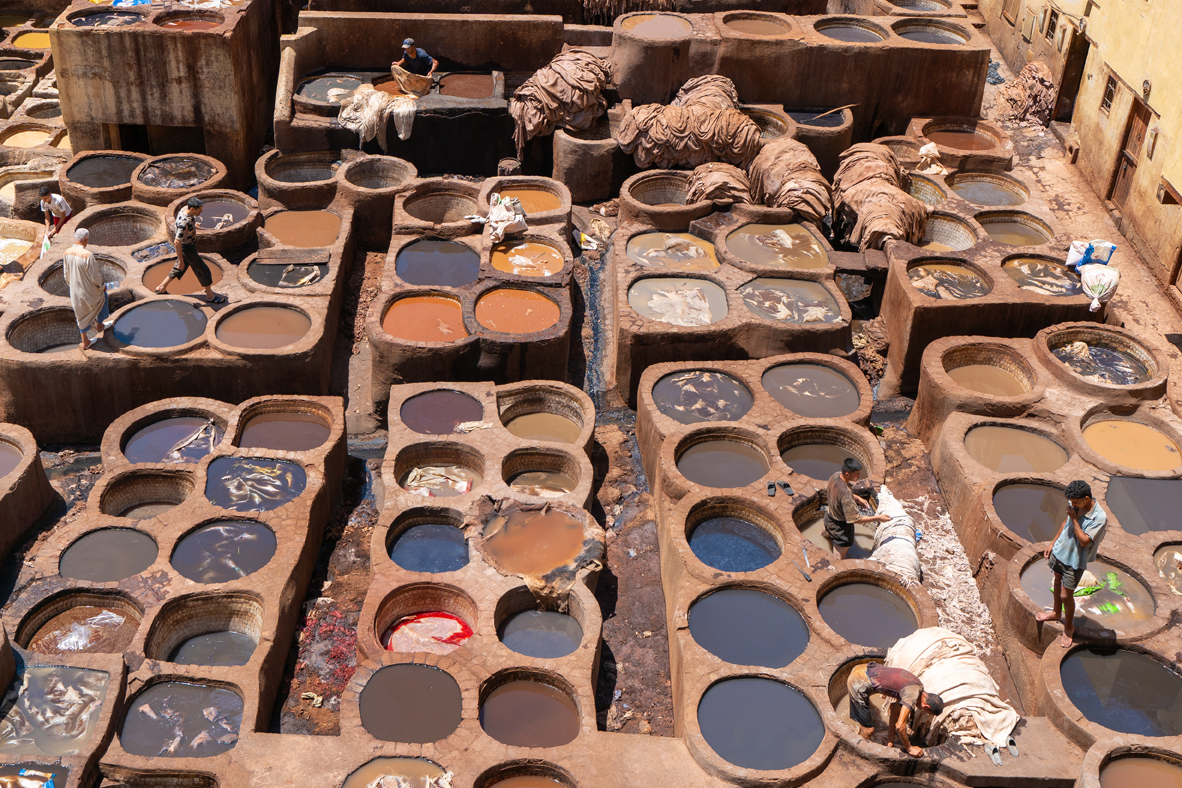
Himalaya 1993, 1995
Descendants of mythical creatures
(Excerpt from the diary)
In the late afternoon, when the sun has long since set behind the almost 8,000-metre-high mountains, Tanja and I stroll through the charming mountain village of Karimabad. It is a pleasure to be among these extremely friendly people. The mentality of the people up here in the Hunza Valley is completely different from the rest of Pakistan. Some of the noble leaders of Hunza even claim to be descendants of mythical creatures. On the other hand, many ordinary mortals in northern Pakistan boast that they are directly descended from Alexander the Great, or Iskander as they call him, who once crossed the Hindu Kush to the Indies. The clear blue eyes and light skin color of many inhabitants may confirm the theory that some soldiers from Alexander’s army actually stayed here. But there are so many different ethnic groups and languages in the north that this theory seems very daring to me.
Artists in canal construction
The tiny mountain village looks like paradise to us. We have been here for weeks now, writing the book about our Pakistan expedition. Some of the residents know us by now and wave at us with a smile. Small wheat fields border the winding path. The farmers have laboriously created narrow terraces which they cultivate. The fresh green of the fields stretches up to the steep faces of the six- and seven-thousand-meter peaks. An ingenious irrigation system brings the vital water to the remotest corners of every field. Over the centuries, the Hunzas have developed into ingenious canal and terrace builders. Every conceivable patch of earth, no matter how small, is used by them for economic purposes.
The fertile, green fields provide a stark contrast to the gigantic mountains. I now realize what a feat these mountain people accomplish with their irrigation systems. Not so long ago, the Hunzas built an irrigation canal to guarantee them a constant supply of fresh water. Rockfall caused more than ten deaths during the construction of the canal, but the mountain farmers were not dissuaded from their project and completed the vital canal. Its gradient is sometimes barely visible, making it almost impossible to see in which direction the water is flowing. This canal, built with admirable architectural achievement, nestles along the almost vertical rock faces of the Nullah. It channels the meltwater from the Ultar glacier into the valley. It flows past frightening slopes, and tunnels often shorten the route. Yes, even simple wooden gutters have to be used in some places to divert the water. Catch basins were repeatedly created to regulate the water. Depending on weather conditions and the time of year, more or less water flows. The catch basins guarantee a constant water level so that the villages cannot be flooded.
Like most streams, canals and meltwater, it all flows into the wild Indus down in the valley, whose water masses are becoming increasingly powerful. Today it is spanned by modern bridges built in the Chinese style. Even before the Karakoram Highway was built, these bridges looked completely different. Ropes twisted from birch branches spanned the raging floods, which were used to shimmy across the water. Three ropes were stretched across the raging water. On the lower one, you had to balance like a tightrope walker while holding on to two guide ropes on the left and right.
Centenarians are not uncommon here
The village of Karimabad nestles against the 7,399-metre-high Ultar, which is still unclimbed today. In good weather, its two snow-covered main peaks loom menacingly and mightily through the wall of clouds, while on the opposite side of the valley the Pakaposhi, at 7,780 meters, majestically and sublimely borders the valley. Here in Karimabad, fertile land is so scarce that there is hardly any room for livestock. Goats, sheep and cattle often live in people’s houses. On the little land that the farmers cultivate, they sow wheat and maize or plant orchards. They are famous for their delicious apricots. Even today, despite the ban on alcohol, wine is still grown, which matures in some cellars into Hunzawasser (must). The fruit is dried for the harsh winter, and the apricot kernels are also ground and fed to the cattle. Oil for heating and protecting the skin is extracted from the inside of the kernel. There is hardly anything left to buy in the stores in spring. Especially before the completion of the Karakoram Highway, infant mortality was very high at that time.
Because of their healthy diet, the pure air, the vitamin-rich apricots, the glacier water with its high mineral content and the eternal peace and quiet, the Hunzas had a reputation for growing very old. Centenarians were not uncommon here. But since Coca Cola and hamburgers have made inroads here, things have changed…
Himalayas 1993/1995
Tanja and Denis Katzer crossed the Karakorum Highway overland to China. The impressive, rugged mountain ranges of the Hindu Kush, the Karakoram and the Himalayas comprise over 120 peaks with an average height of 6550 meters.

